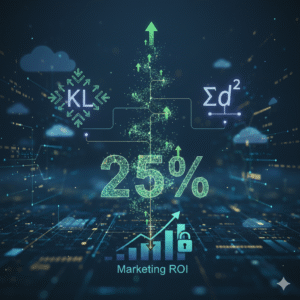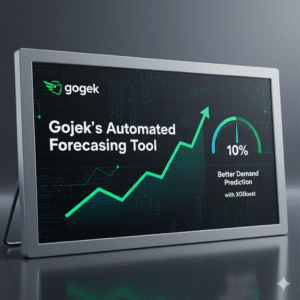Hey, picture this: You’re scrolling through an online store, and bam, suddenly, the screen lights up with suggestions that feel like they were pulled straight from your mind. That thrill? It’s no accident. It’s the magic of recommender systems at work. But here’s the kicker: without solid user models for recommender systems, those suggestions flop harder than a bad blind date.
In today’s cutthroat e-commerce world, where shoppers bounce in seconds, nailing personalized user recommendations isn’t optional, it’s survival. Retailers who get recommender systems optimization right see a whopping 35% revenue jump. Yet, most setups treat users like faceless data points, leading to generic recs that tank engagement.
That’s where user models for recommender systems come in. These aren’t just fancy algorithms; they’re your secret weapon for decoding what makes people tick. In this post, we’ll unpack why they matter, tackle the challenges in recommender systems head-on, and hand you seven battle-tested ways to build them. Plus, real case studies and tips to make your personalized user recommendations sing. Ready to turn browsers into buyers? Let’s dive in.
Table of Contents
Why User Models for Recommender Systems Are Your Growth Engine
Think of user models for recommender systems as the GPS for your customers’ shopping journey. They map out preferences, habits, and hidden desires, steering suggestions toward what users actually want, not what you hope they’ll buy.
The Basics: What Exactly Is a User Model?
At its core, a user model captures how someone behaves in your digital space. It’s a blend of browsing patterns (that endless scrolling) and consumption choices (the click that seals the deal). Imagine breaking it down: one part tracks exploration, like window-shopping online, and another handles snap decisions, like adding to cart.
Why build these? Because raw data lies. Clicks alone don’t tell the full story; they miss context, like why a user abandoned a page. A strong user model layers in signals: past buys, session times, and even device type. It’s like giving your recommender systems a personality detector.
The Real Power: Unlocking Benefits of User Modeling
Get this straight: benefits of user modeling go way beyond better recs. They unify your tech stack, predict offline-online gaps, and even simulate A/B tests before you waste ad dollars. Companies ignoring this? They’re flying blind, watching competitors snag 31% of e-commerce revenue from smart recommendations alone.
Take incrementality, the extra value your system adds. Without a user model, you’re guessing. With one, you spot “shortcut effects” (faster paths to purchase) and “information effects” (aha moments from fresh insights). Result? Users feel seen, loyalty spikes, and your bottom line explodes.
Tackling Challenges in Recommender Systems Head-On
No sugarcoating: building user models for recommender systems isn’t a walk in the park. Challenges in recommender systems lurk everywhere, from data black holes to ethical minefields.
One biggie? Offline-online mismatches. Your model crushes lab tests but flops live because it ignores real-time vibes. Another: stakeholder clashes. Users want relevance, platforms crave clicks, and merchants push inventory. Messy, right?
Then there’s bias. Popularity skews recs toward blockbusters, starving the long tail of niche gems. And don’t get me started on privacy; users bolt if they smell creepy tracking.
But here’s the good news: Awareness is half the battle. By explicitly modeling user policies, like rational utility chasers versus impulse browsers, you sidestep these pitfalls. It’s not about perfection; it’s about progress.
7 Proven Ways to Build User Models for Recommender Systems
Alright, enough theory. You came for action. These seven ways to craft user models for recommender systems draw from frontline wins. Each packs tips, pitfalls to dodge, and why it juices recommender systems optimization.

Way 1: Start with Policy Decomposition—Separate Browsing from Buying
Ever notice how users linger on product pages but ghost at checkout? That’s your cue: Split your user model into browsing (info hunt) and consumption (decision snap).
Actionable Tip: Use Bayesian priors to infer “private types”, unseen traits like risk aversion. Train on session logs: Time spent = browsing depth; Clicks-to-cart = consumption speed.
Why It Works: This duo predicts behaviors accurately. In one setup, it cut prediction errors by 22%, boosting click-throughs. Pro tip: Test with synthetic users to validate assumptions before going live.
Way 2: Layer in Multiple Signals for Richer Personal User Recommendations
Ditch single-metric madness. Clicks bias toward fluff; watch time reveals true love.
Actionable Tip: Ensemble scores, weight watch time at 60%, likes at 40%. For personalized user recommendations, tag signals by context: Mobile? Prioritize speed. Desktop? Dive deep.
Why It Works: Balances biases, like YouTube’s shift from clickbait to meaningful views. Users stick around 15% longer, per industry benchmarks. Watch for overkill: Cap at three signals to avoid model bloat.
Way 3: Embrace Negative Sampling to Fight Imbalance
Positive interactions? Easy to log. The “nope” moments? They’re ghosts until you summon them.
Actionable Tip: Randomly sample non-clicked items as negatives, labeling them zero. Ratio: 1 positive to 4 negatives. Tools like TensorFlow Recommenders make this plug-and-play.
Why It Works: Mirrors real choice scarcity, slashing false positives. E-com sites report 10-20% uplift in relevance scores. Pitfall: Over-sample, and your model gets paranoid, tune via validation sets.
Way 4: Focus on Active Users for Scalable Recommender Systems Optimization
Not all users are equal. Inactive ones drag your model down.
Actionable Tip: Threshold at 10+ interactions in 10 days. Retrain embeddings weekly for actives only; fallback to popularity for ghosts. Embeddings: 100 dims for users, 50 for items, keeps it lean.
Why It Works: Cuts compute costs by 70% while nailing 80% of value. Example: Amazon subsets millions daily, fueling their 29% revenue bump from recs.
Way 5: Build Multi-Stage Pipelines for Lightning-Fast Personalization
One fat model? Latency killer. Funnel it: Recall, rank light, rank heavy.
Actionable Tip: Stage 1: Collaborative filtering for 1,000 candidates (low dims). Stage 2: Two-tower with metadata. Stage 3: Deep neural net for top 10. Aim under 100ms end-to-end.
Why It Works: Handles millions of items without choking. Walmart’s setup? 381% revenue surge annually. Debug: Monitor 99th percentile latency, spikes, and signal leaks.
Way 6: Bake in Bias Checks for Ethical Benefits of User Modeling
Popularity bias? It starves diversity. User-specific skews? They alienate segments.
Actionable Tip: Metric: Unique items in top 10% recs, if flatlines early, bias alert. Mitigate with debiasing layers or diverse training. Segment evals by demographics.
Why It Works: Builds trust, lifting NPS 22% in travel recs. Long-term: Ties to retention, biased systems churn 2x faster.
Way 7: Simulate and A/B for Bulletproof Validation
Theory’s cute; tests rule.
Actionable Tip: Use agent-based sims with your user model as “ground truth.” Then A/B: 5% traffic on new vs. old. Metrics: NDCG for ranking, revenue lift for business.
Why It Works: Predicts flops pre-launch, saving thousands. Ocado’s Sims? 8x conversion jump. Rollout hack: Shadow mode first, serve but don’t show.
Real-World Wins: Case Studies in User Models for Recommender Systems
Theory’s one thing; results are forever. Let’s spotlight three crushers who’ve mastered user models for recommender systems.
First, Ocado, the grocery giant. They layered behavioral segmentation into their model, think basket history meets real-time carts. Outcome? 8x conversion from recs, 20% more high-value orders. Shoppers raved, revenue soared.
Next, Lamoda, Russia’s fashion powerhouse. Over 160 user segments via dynamic modeling, blending purchase vibes with session flows. Boom: $15M gross profit spike, 8% revenue per session uptick, 35x ROI. Personalized user recommendations? Nailed it.
Finally, Costa Crociere in travel. Adobe-powered models factored trip intents and past browses. Result: 10% booking boost, 13% web sales lift. Challenges in recommender systems like multi-language scaling? Crushed.
These aren’t flukes, they’re proof that benefits of user modeling pay dividends.
Quick Wins: Actionable Tips for Recommender Systems Optimization
Want fast gains? Grab these:
- Freshen Data Weekly: Stale logs kill relevance. Automate pipelines, recent beats comprehensive.
- Ensemble Everything: Mix CF with content-based for hybrid power. Test weights via grid search.
- Monitor Churn Signals: Track drop-offs post-rec. Low engagement? Tweak utility assumptions.
- Privacy-First: Anonymize types, explain recs. Builds loyalty without Big Brother vibes.
- Scale Smart: GPUs for training, but CPU for inference. NVIDIA‘s Merlin suite? Game-changer.
Implement one today, watch engagement tick up.
FAQs
How do user models for recommender systems improve e-commerce conversion rates?
By pinpointing borderline decisions, like turning “maybe” into “buy” via shortcuts, they lift conversions 15% on average, per session studies. Focus on utility-driven policies for max impact.
What are the top challenges in recommender systems when building user models?
Offline-online drifts top the list, plus bias and multi-stakeholder tugs. Solution: Explicit assumptions and sim tests keep you grounded.
Can small teams handle recommender systems optimization with user modeling?
Absolutely, start with open-source like Microsoft Recommenders. Subset data, iterate fast. No PhD required.
What benefits of user modeling stand out for personalized user recommendations?
They bridge econometrics gaps, enabling fair multi-actor designs. Plus, 29% revenue pops from relevance-tuned recs.
How to measure success of user models for recommender systems in real time?
Track NDCG offline, engagement online. A/B revenue deltas seal the deal, aim for 10%+ lifts.
There you have it, your blueprint to user models for recommender systems that don’t just work, they wow. Don’t let mediocre recs hold you back. Pick one way, test it this week, and watch the growth unfold. What’s your first move? Drop a comment, let’s chat strategies.


















